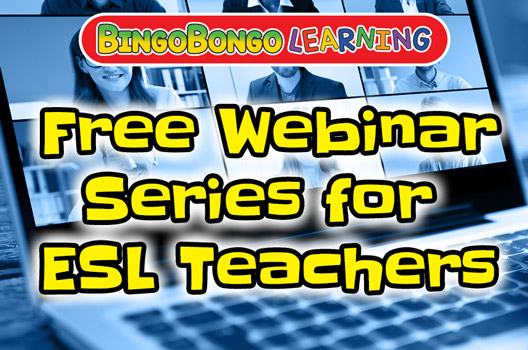The BINGOBONGO 3-Month Rapid Reading Program is changing the way students learn to read!
Do you want to teach your EFL/ESL students to start reading in three months? Then the BINGOBONGO 3-Month Rapid Reading Program might be perfect for you!
Teaching English as a Foreign Language (EFL) to students to read effectively requires a unique approach, especially in a country like Japan where English is not the primary spoken language. The challenge lies in developing reading skills in a non-native language, which can be more complex than learning to read in one’s native language.
The BINGOBONGO 3-Month Rapid Reading Program, which was developed at Step by Step English School, has been specifically tailored to overcome these challenges, emphasizing rapid and efficient learning. This approach has been proven effective over the years, with students showing remarkable progress in a relatively short period. This article will explain the three major components of the BINGOBONGO 3-Month Rapid Reading Program (effective course, practice and input outside of lessons, increased motivation) required to help you start teaching your students to start reading in three months.
Table of Contents
- The Importance for Teaching with the Rapid Reading Program
- The Basics of Reading for EFL Students
- Resources Used in the 3-Month Rapid Reading Program
- The Schedule of the 3-Month Rapid Reading System
- Challenges Teachers Face When Teaching Reading
- Validating the Effectiveness of the 3-Month Rapid Reading Program
- Try the BINGOBONGO 3-Month Rapid Reading Program!
The importance for teaching EFL/ESL Students with the Rapid Reading Program
Reading is a crucial skill for EFL learners, as it opens up a world of knowledge and enhances overall language proficiency. Unlike native speakers who grow up immersed in their language, EFL students need structured guidance to develop reading skills. If the the process of teaching students to read is too slow, it can be less effective and students may lose motivation or interest.
For over 10 years, the professional educators at Step by Step English school have been developing a comprehensive solution, addressing common challenges faced by EFL students in their reading journey. This solution, called the BINGOBONGO 3-Month Rapid Reading Program, is an effective course which offers a blend of structured learning combined with a system that allows students to get more input and review at home than they get in lessons. As a result, with this system it’s possible to teach students to start reading in three months.
Understanding the Basics of Reading for EFL Students
What is the Ideal Age to Start Teaching Students to Read using the 3-Month Rapid Reading Program?
The question of when to start teaching EFL students to read is a subject of much debate in language education. Starting reading lessons early can help students develop reading skills alongside their native language. However, starting too early without a strong base in verbal communication can lead to difficulties in both understanding and remembering the material.
For instance, Finland, which boasts a 100% national literacy rate, typically starts teaching children to read at around seven years old. This delay allows Finnish children six to seven years to develop verbal skills in their native language, creating a solid foundation for learning to read. On the other hand, a 4 or 5-year-old EFL learner with limited English exposure might find starting reading lessons challenging due to a lack of verbal skills.
Japanese teens and adults often express having confidence in reading and writing English but struggle with listening and speaking. This discrepancy is largely due to an education system focused on written English for exams, overlooking the importance of spoken language. This problem can be even worse for younger students who are taught to read and write first. In extreme cases, these students will never develop an interest in verbal communication.
Building a Strong Foundation in Verbal Communication First is the Key to a Successful Future
It’s essential for EFL students to develop strong speaking skills before beginning reading lessons. This involves a thorough understanding of vocabulary and sentence structure. Speaking and reading, while interconnected, require different skill sets.
At Step by Step English, our young students start by learning vocabulary and the alphabet using FUNbook 1: Super Easy ABCs & 123s from the age of three. This method introduces them to letters and words in a pressure-free environment, taking advantage of their natural ability to absorb new information. We prefer to focus on this exposure for three years without pushing them to read sentences.
This relaxed approach ensures that learning is stress-free. Our lessons are designed to engage students in practical English usage through fun activities and games, enhancing their speaking abilities. Once students have built a strong verbal foundation, we find they are ready to start using the rapid reading program.
Do you you mean the BINGOBONGO 3-Month Rapid Reading Program takes 3 years?
Well, kind of. The key to successfully using the 3-Month Rapid Reading Program is ensuring that the students first have a solid understanding of the vocabulary and grammar they’ll come across in reading. Based on our experience with various teaching methods, this approach consistently yields the best results.
For students that start studying English at a later age, it’s not realistic to spend three years focusing on speaking without teaching them how to read. Luckily, the older students get, the faster they are able to comprehend and remember content from lessons, so the three-year span can be reduced to as short as one year.
The resources used in the 3-Month Rapid Reading Program
Let’s explore the resources we use in the 3-Month Rapid Reading Program.
BINGOBONGO Learning’s Phonics + Math FUN!book
This 160-page book is fantastic for motivating students to read confidently. Here’s why:
- The worksheets are repetitive, colorful, and use vocabulary from FUNbook 1.
- Each page includes a speaking challenge, ensuring practice in all English communication aspects, not just reading and writing.
- The book logically introduces phonics with C-V-C and C-V-C-E structures and teaches reading through word shapes with familiar terms like numbers, names, and prepositions.
- Every page features a QR code linking to pronunciation guides, worksheet tutorials, and additional games and resources for continued engagement.
The BINGOBONGO Digital Learning System (FUN!box and GoZone)
The BINGOBONGO Digital Learning System, developed over 10 years, enhances study and review after lessons and virtually eliminates lesson planning.
- The FUN!box and GoZone contain over 7,000 printable and video resources in one place, without needing external links.
- They allow instant game loading for any worksheet’s vocabulary and customization of vocab lists.
- Both are structured for easy navigation with supplementary resources ready for each target worksheet or game.
- Users can draw, type, and create a screen with their webcam that makes it easy to record videos such as mini lessons and worksheet tutorials.
- QR codes provide easy access, reducing technical challenges.
What are the differences between the FUN!box and GoZone?
While similar, the FUN!box and GoZone have distinct features:
- The FUN!box is less visually oriented and is designed for teachers who are familiar with the BINGOBONGO English Curriculum. It offers straightforward navigation for accessing teaching materials.
- The GoZone, on the other hand, is more user-friendly for those less acquainted with the curriculum. It features a simple drag-and-drop style interface, making it easy for teachers to quickly search for activities and build a custom curriculum.
- The FUN!box, designed for teachers familiar with the BINGOBONGO English Curriculum, offers less visual navigation.
- The GoZone, ideal for teachers new to the curriculum, allows for easy activity search and custom curriculum creation with a drag-and-drop approach.
The schedule of the 3-month rapid reading system
Some Challenges Teachers Face When Teaching Students to Start Reading in Three Months
If you’ve attempted teaching reading, you’re likely familiar with the challenges outlined below. Let’s examine these and explore how the 3-Month Rapid Reading Program offers solutions.
Students with No English Background
Learning to read while acquiring new vocabulary can be daunting for young children. I believe that prioritizing verbal communication before reading is beneficial. However, if circumstances require students to start reading, the At-Home Challenge can provide vital support. This approach, incorporating videos and games, allows students with limited English exposure to catch up quickly and effectively. It ensures that their verbal skills develop alongside their reading abilities, leading to greater confidence in their learning journey.
Phonics and Reading Programs Needing More Resources
One of the main hurdles for teachers is finding adequate materials for reading instruction. While there are numerous excellent courses, the absence of supplementary at-home activities can slow down the learning process.
Integrating diverse activities and games, such as the Battle Eggs card game, stickers, and providing abundant home-based tasks like watching videos and songs, practicing speaking, and accessing solution videos for worksheets, has proven effective in extending learning beyond the classroom.
Students Not Studying Enough at Home
A significant obstacle in teaching reading in a reasonably short time frame is encouraging students to engage in home study. Despite the availability of apps and games, many students do not utilize these resources enough due to various factors, including lack of parental support or technical difficulties.
The BINGOBONGO Digital Learning System addresses this issue by consolidating online flashcards, games, reading apps, videos, songs, and tutorials on a single user-friendly website. Once students log in, they remain logged in, eliminating the need for downloads or complex setups.
Adhering to the ‘one-to-one’ rule—ensuring students review at home for the same duration as their class time—can lead to noticeably improved progress almost immediately.
Validating the Effectiveness of when Teaching Students with the 3-Month Rapid Reading Program
How do we measure our students’ reading progress with the BINGOBONGO 3-Month Rapid Reading Program? Twice a year, we conduct video evaluations to test their reading, spelling, and verbal communication skills. This helps us set achievable goals and track the percentage of students meeting these objectives.
Using Video Evaluations for Monitoring Progress
Student Evaluation Videos have proven to be an excellent tool for monitoring reading development. By recording students during reading tasks, we get an objective measure of their progress over time. These evaluations are particularly effective for assessing improvements in fluency, comprehension, and pronunciation. They also enable students to visually track their own progress, deepening their understanding of their reading abilities.
Through these video evaluations, we were quickly able to see how integrating the At Home Study System and interactive games such as KEY!pop, an AI-powered resource for reading, speaking, and listening, has led to significant improvements in over 90% of our students. Notably, even four-year-olds can read C-V-C words and spell them from memory, a skill not directly targeted in our lessons but acquired through home study.
For educators looking to implement a similar evaluation method, video evaluations offer a practical starting point, providing valuable insights into students’ reading growth.
Are You Ready to try the BINGOBONGO 3-Month Rapid Reading Program?
Teaching EFL/ESL students to read in three months is ambitious yet attainable thanks to the BINGOBONGO 3-Month Rapid Reading Program. Success hinges on a structured approach, using tools like the Phonics + Math FUNbook, complemented by the At Home Study System and various online games. These resources simplify lesson planning and give students numerous opportunities to practice both inside and outside the classroom. If you have questions or want to discuss this topic further, don’t hesitate to contact us. We’re eager to share our knowledge with other dedicated educators.



















